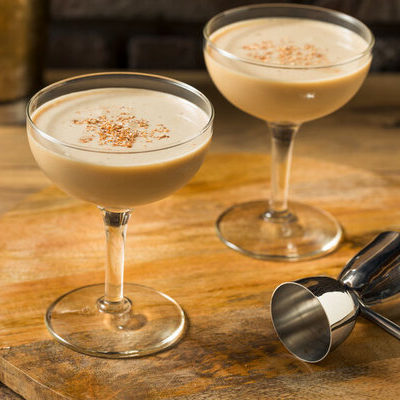
Crème de Cacao
What is Crème de Cacao?
Crème de cacao is a sweet chocolate flavored alcoholic beverage. This drink is a type of chocolate liqueur, but is less sweet and has a thicker consistency. The name originates from French and means cream of cacao.
- This drink has an alcohol by volume content of 20%.
- It is available in white or dark varieties and also contains a little vanilla.
According to Town and Country Magazine, the top seven chocolate liqueur brands are:
- Tempus Fugit
- Patron XO Café Dark Cocoa
- Dorda Double Chocolate Liqueur
- Bottega Nero Cioccolato Gianduia
- Godiva Dark Chocolate Liqueur
- Sheelin White Chocolate Liqueur
- Baileys Chocolate Cherry
Origin of crème de cacao
Over the course of history, this liqueur has existed in different forms. In the 16th century, people moved cacao beans from Mexico and South America to Europe. According to records, the first set of people to use the beans to make alcohol were French monks. Around this period, European monasteries were also producing wormwood wines for medicinal benefits. Crème de cacao was a product of these early experiments.
In the 1980s and 1990s, many associated crème de cacao with saccharine dessert cocktails and chocolate martinis. The variety of this liqueur depends on its method of production, as it can either be percolated or distilled. In recent decades, several people have created different cocktail recipes that have become wildly popular. Pegu Club’s Brian Miller created the 19th century, a cocktail that essentially contains bourbon and white crème de cacao. Later on, Jim Meehan from the Pegu Club, created another cocktail called the 21st century.
Function
This beverage is commonly mixed with spirits to craft delectable cocktails. This chocolate-flavored liqueur can also be poured over ice cream and desserts. Furthermore, it is popularly consumed with coffee.
Nutrition
A serving of 1 fluid ounce (25g) of crème de cacao contains:
- 72 calories
- 9.9g of carbohydrates
- 0g of protein
- 0g of fat
This liqueur contains alcohol, which provides possible health benefits, including:
- It can reduce the risk of suffering from an ischemic stroke.
- This drink may be able to reduce the risk of diabetes.
- It might also decrease the risk of developing heart disease.
However, this drink should be consumed responsibly and in moderation because of its alcohol content. Excessive drinking can result in stroke, high blood pressure, liver disease, and pancreatitis.
Commercial production
This chocolate liqueur can be produced either by percolation or distillation. Percolation involves placing cacao beans in a filter and dripping alcohol through it. The resulting drink is usually dark in color and rich in bitter cocoa flavor. The distillation method produces a clear and light milk chocolate flavor. Typically, this process involves distilling the cacao beans and saturating the distillate in vanilla beans for aroma.
Application
This drink can remain suitable for consumption for 1 to 3 years, if stored under the right conditions. Once you have opened a crème de cacao bottle, it’s best to place it in the refrigerator. This will extend the shelf life of the liqueur. Any signs of discoloration or crystallized sugars in the drink may indicate that the liqueur is no longer suitable for drinking.
Crème de cacao recipes
This drink blends well with a host of delicious cocktails. Here are some popular recipes:
- Chocolate and Orange Martini
- Alexander
- Bacardi O Chocolat Rendezvous
- Crème Egg Cocktail
- Crème de Cacao Torte
FDA regulation
The Food and Drug Administration has standards of identity for various types of cacao products. It also has a standard of identity for cacao nibs. Cacao nibs are defined as food prepared from removing the shell from cleaned, cracked, dried, and cured cacao beans. Cacao beans are an integral component in producing crème de cacao. According to the TTB, a liqueur is a flavored spirit containing not less than 2½% by weight sugar, dextrose, levulose, or a combination thereof made by mixing or redistilling any class of spirit over fruits, flowers, plants, pure juices, or any other natural flavoring materials or with extracts derived from infusions, percolation or maceration of such materials.
References
“Alcohol in Moderation: How Many Drinks Is That?” Mayo Clinic, Mayo Foundation for Medical Education and Research, 26 Oct. 2019, www.mayoclinic.org/healthy-lifestyle/nutrition-and-healthy-eating/in-depth/alcohol/art-20044551.
“CFR – Code of Federal Regulations Title 21.” accessdata.fda.gov, U.S Food & Drug Administration, 1 Apr. 2019, www.accessdata.fda.gov/scripts/cdrh/cfdocs/cfcfr/CFRSearch.cfm?CFRPart=163.
